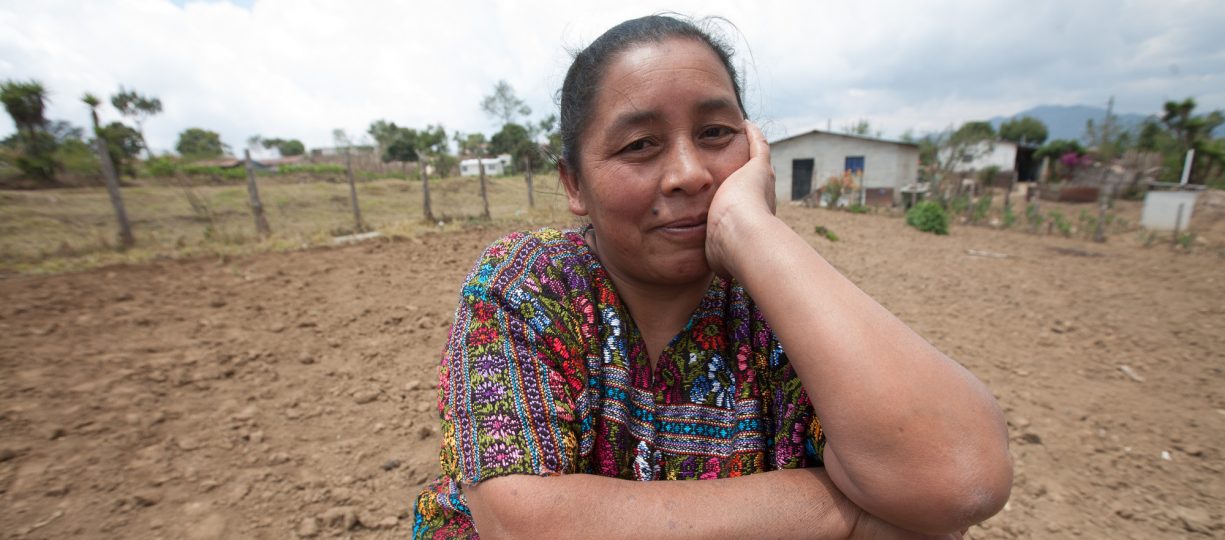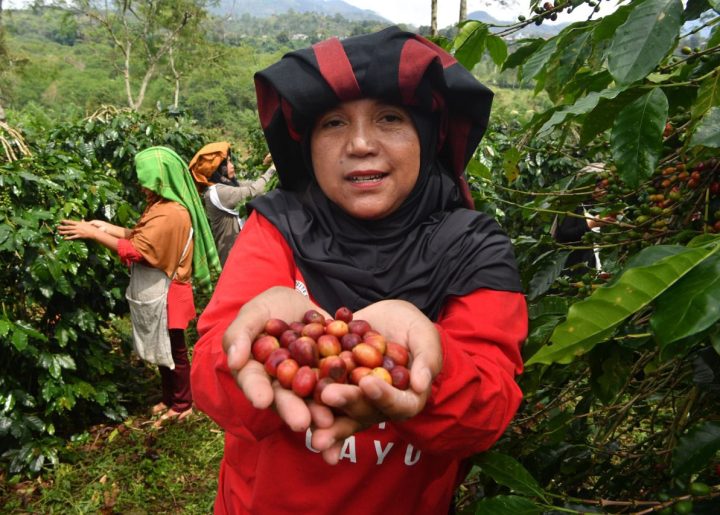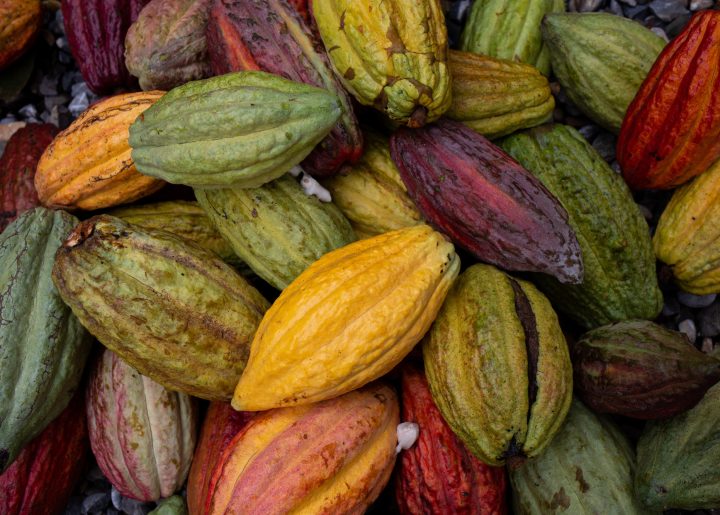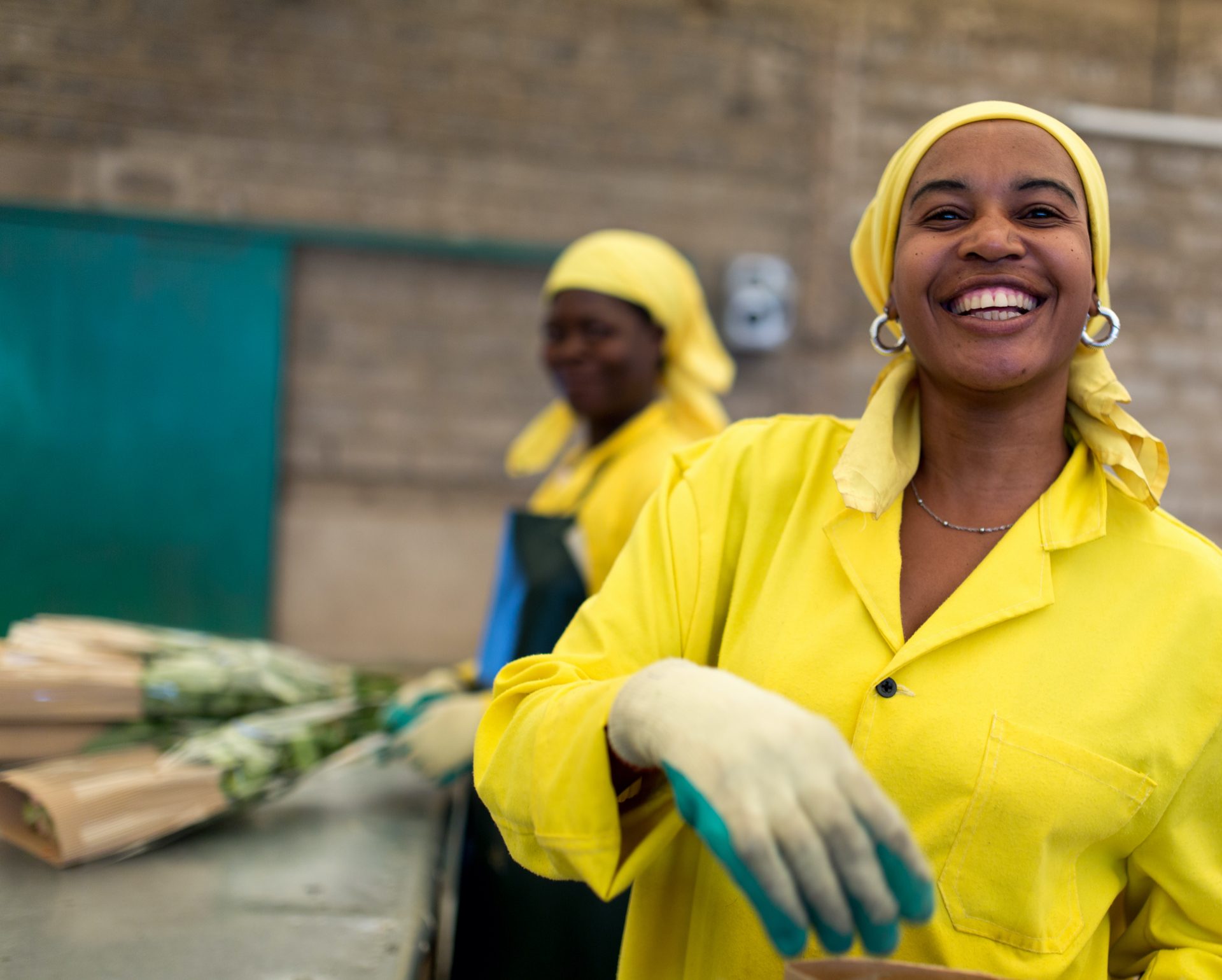Finding Common Ground

In our globalized economy, we’re all part of one enormous food system affected by many of the same forces. Whether you’re a single parent on food stamps or a coffee farmer in Tanzania, we all face challenges around food security and access to healthy, sustainably-produced food.
I was recently struck by how many of the challenges around food faced by people in the US are relevant in Fairtrade too – food security and access, sustainable production, and many more. Since I’m like a cat lady for plants, I make an annual pilgrimage to Rooting DC, an urban agriculture and gardening symposium in Washington, DC, to learn new gardening techniques and the latest in sustainable food.
This year I joined the ranks of the presenters and shared five key issues affecting workers and small farmers in the US that are similar to those confronted by Fairtrade farmers and workers.
Impacts of Climate Change
Fairtrade farmers and workers are miles ahead of us on this. For them, climate change isn’t some colorful ‘El Niño’ graph. It’s watching their coffee bushes as they are ravaged by coffee rust, which thrives in hotter, more humid conditions. It’s droughts so long that even deep wells dry up and you watch as your cotton plants shrivel and drop their leaves.
While the effects aren’t as immediately evident in the US, we’re seeing the practical impacts of climate change on agriculture, especially in California, which continues to face serious droughts. As climate change accelerates, shifting to more responsible agricultural practices is a vital part of the solution to counter unsustainable production and consumption. .
For Fairtrade farmers, climate change and adaptation are the biggest challenges they are confronting. Read more on how they are working to adapt.
Workers’ Rights
In the US, groups like the Coalition of Immokalee Workers, an organization of domestic farm laborers, are fighting for better conditions and reminding us that human rights violations occur regularly in our own backyard. In fact, federal regulations addressing migrant and seasonal farm workers’ rights have not been updated since 1983.
Since many countries in the Global South rely on cheap labor to incentivize foreign investment, protections for hired farm labor are often even weaker than in the US. Companies and governments go to great lengths to maintain the status quo and discourage workers from organizing. Safe working conditions are often neglected, and workers attempting to organize are sometimes subjected to retribution and even murder. In a new documentary, Beyond the Seal, one worker in Ecuador recounts how plantation workers were banned from leaving banana fields when toxic pesticides were being sprayed. Such violations in the agriculture sector are commonplace around the world.
Gender
Over half the people in the world (me included!) are women. In the US, women are taking up farming at a higher rate than men, and have been experimenting with creative solutions like urban farming in food deserts. Women are also more likely to be involved in conservation and sustainability programs, according to an Iowa study. All this suggests that supporting women farmers could make a big difference in dialing back the destructive practices of conventional agriculture and improving access to food.
Women in the Global South play an even more vital role in food production in their countries. Closing the gender gap in agricultural yields could reduce the number of undernourished people by 100-150 million. This means addressing land rights, gender-based violence, and cultural or legal restrictions to business ownership.
Fairtrade International recently rolled out its gender strategy. Download it here.
Child Labor
Most people in the US think this is only a problem in the developing world, but in fact children as young as 12 are allowed to do a full day’s work in agriculture here in the US. Though the problem is not as acute here, 20% of all farm work fatalities in the United States are children. This short film is an eye-opener to the reality of child labor in the US.
In the Global South, many sectors, such as cocoa, have high rates of child labor and forced child labor. According to the International Labor Organization (ILO) there are around 168 million child laborers in the world; nearly half of them work in hazardous conditions. The ILO rates agriculture as one of the top three most dangerous industries, along with mining and construction, so instances of child labor in this sector are especially serious.
Get more info on Fairtrade’s approach to child labor here.
Access to Credit and Markets
Farmers are in business, and all businesses needs liquid capital to take care of the day-to-day expenses, especially if there are only one or two harvests per year. American farmers face significant barriers to accessing the credit needed to bring their goods to market, and they were harder hit than many other sectors during the recession.
Smallholder farmers in the Global South, and the co-ops they belong to, face similar pressures. Though many are credit worthy in their ability to repay loans, they have difficulty accessing credit if they don’t own their land or lack collateral. Compounding the problem, many of their businesses are too large to qualify for micro-loans. Lending portfolios that help farmers in the Global South access credit vastly improve the ease of doing business. In 2012, Fairtrade, the Grameen Foundation and Incofin created the Fairtrade Access Fund, which now has rotating capital of $25 million to help well-manage producers access affordable credit for investments in infrastructure, pre-financing, technical training and more.
But the challenges are still great for the grand majority of producer organizations.
So What Do We Do About It?
As you can imagine, I’ve only scratched the surface on the problems facing our food system. With issues that run deep and span the entire globe, it’s easy to feel overwhelmed. But for everyday consumers confronted with crowded grocery aisles and a wide variety of products competing for your attention, a good place to start is with a simple acronym: LOFT – Local, Organic, Fairtrade.
- Buying local connects you to the farmers in your neighborhood, who are often doing great work in sustainable agriculture. You can get to know them personally, find out what they’re up to by visiting a farmer’s market, or talk to the produce manager at your favorite grocery store to see which products are locally-sourced.
- Organic agriculture’s focus is on the environmental component of sustainability. It also has the bonus of often being safer for the farmers themselves, since they’re much less likely to be exposed to toxic chemicals. The market for organic foods continues to grow in the US. In addition, more than 50 percent of all Fairtrade farmers are also organic certified.
- Not everything we eat can be sourced from a 50-mile radius. Lots of products, like bananas, coffee, and cocoa can’t be grown in the US in sufficient quantities. In this case, Fairtrade is like a global farmers’ market connecting you to the producers who grow your morning cup of joe, helping to ensure that they have the resources needed to continue supplying the world with the foods we depend on. Find out more about the different Fairtrade products.
We’re in this together
Fairtrade America partners with brands on the journey to certification and beyond. We can help with everything from finding a certified supply chain to marketing your newly certified product.
Get in Touch





